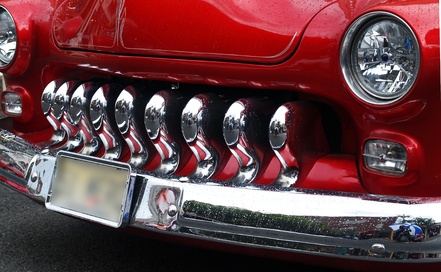
If a car has been in a collision of some kind then the paint is likely to become damaged. Over time car paint will also flake and peel away from the sides of the car. When this occurs many people choose to do their own automotive repair and repaint the vehicle themselves. Preparation for this paint starts with automotive sandpaper. The choice of paper is extremely important for the quality of the paint job.
When choosing sandpaper for automotive repairs and painting, it is important to stay away from wood sandpaper. Wood sandpaper has a different form of grit and can seriously damage and scratch the metal on a car. Automotive sandpaper is specifically designed to sand cars and other metal vehicles and will not cause lasting damage if used properly. Wood sandpaper usually contains real sand particles, but automotive sandpaper is generally formed from metal oxides. Generally, sanding is done for two reasons. Either the car got scratched in a wreck or some other collision, or the car just needs a new paint job and the old paint must be stripped away.
Automotive sandpaper comes in many different grits for different levels of sanding and polishing. Grades of sandpaper range from 40 grit to over 5000 grit. The lower the grit the rougher the sanding job. The lowest levels of grit are used to completely sand away paint and can even shape metal. Typically, any grits under 100 is used for stripping or even rust removal. Anything over 1000-grit paper is commonly used for removing one layer of paint or for polishing the surface of metal to make it shine. The most common kinds of sandpaper used for automotive work fit in between 100- and 1000-grit sandpaper. Each job requires the use of a different kind of sandpaper, and it is important to know what grit should be used for the job at hand before starting.
Each task in automotive sanding and repair requires the use of a different grit of sandpaper. Grades 60, 80, 400 and 600 are typically used for most paint restoring or repainting jobs. It is important to choose a well-known brand of sandpaper. This way you can be sure of receiving the highest quality of sanding equipment. The right equipment will end up saving money in the long run, although the initial expense may be greater. Initial body sanding is usually done with 60- or 100-grit paper. For sanding to prepare the surface for priming, 400- or 600-grit is typically used. Final sanding is done with 1000- to 1500-grade sandpaper after the paint has been put onto the metal.